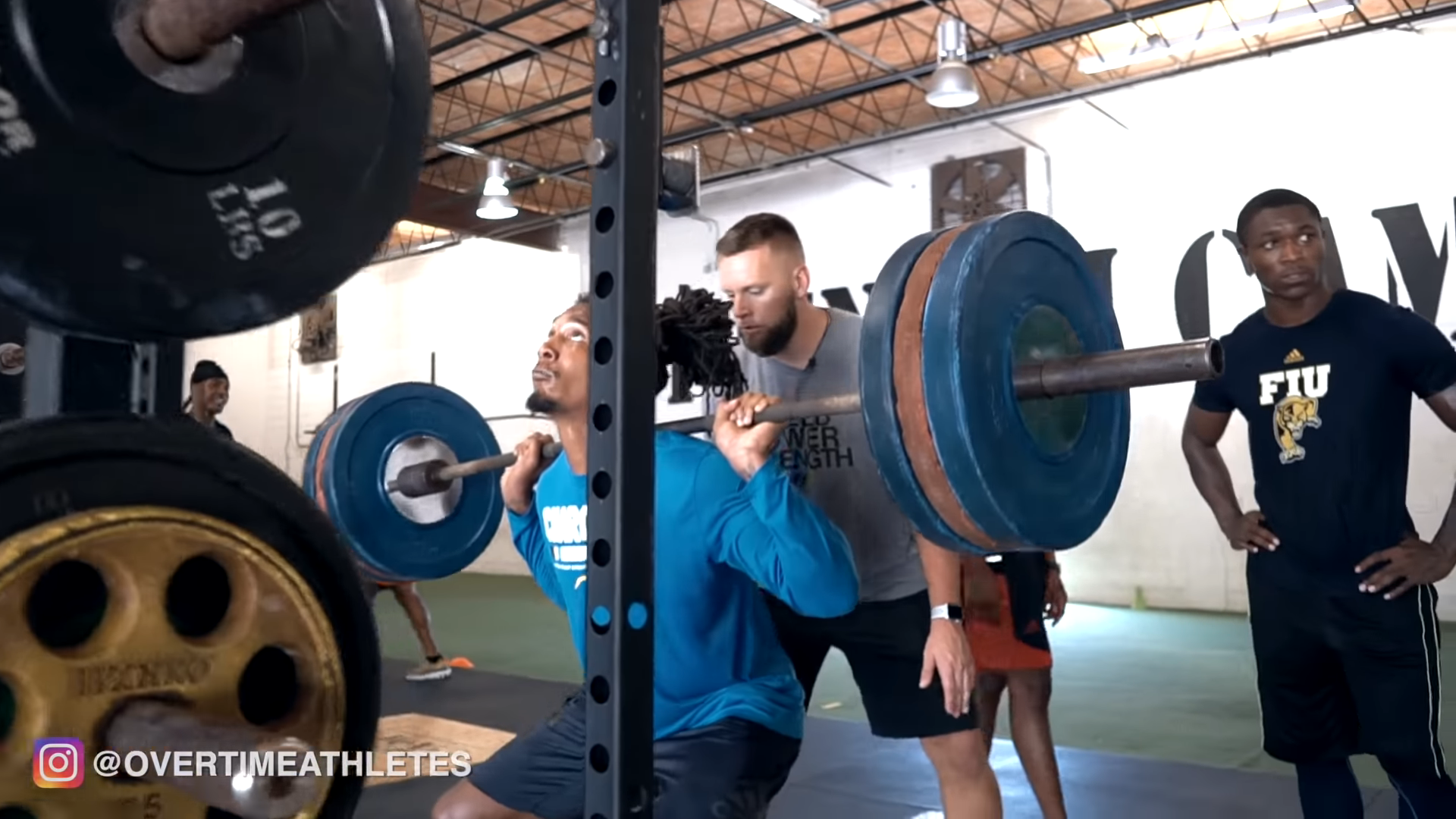If you’re an athlete looking to add quality size and not just bulk, the way you structure your lifts matters.
At Overtime Athletes, our goal isn’t to turn athletes into bodybuilders. It’s to help them build functional mass. Size that improves speed, strength, and performance on the field.
To do that, we use a balanced program: heavy compound lifts for strength and hormonal response, paired with smart accessory methods that increase muscle volume and density.
Here are the 4 methods I rely on to get real results.
 Escalating Volume
Escalating Volume
Simple and brutally effective.
Instead of saying “3 sets of 10,” I’ll give my athletes a total rep goal. For example, 30 reps and tell them to complete it in as few sets as possible.
Example:
- Week 1 → 30 total reps
- Week 2 → 40 total reps
- Week 3 → 50 total reps
- Week 4 → Deload
It might take one athlete three sets, another five or six. The goal? Fewer sets, same reps, better control.
That extra time under tension and near max effort builds muscle fast while keeping training competitive and mentally engaging.
 Timed Sets
Timed Sets
Instead of chasing numbers, we chase the clock.
This method keeps athletes engaged and builds mental toughness and muscular endurance.
How it works:
- Choose an accessory movement (bicep curl, tricep extension, lateral raise, etc.).
- Pick a weight you could normally do ~25 reps with.
- Set a timer for 60–90 seconds.
- Don’t drop the weight. Keep moving at a slow, controlled, and constant pace.
Try three rounds. Your muscles will light up, and your athletes will get more time under tension than ever before.
 Triple Drop Sets
Triple Drop Sets
Classic bodybuilding intensity that we apply to athletic training.
We’ll use this for upper body isolation work like shoulders, arms, or lats.
Example:
- 10 reps with 30 lbs
- Drop to 25 lbs → 10 reps
- Drop to 20 lbs → 10 reps
No rest between drops. Just pure volume and fatigue.
By the third round, the “light” weight feels heavier than the first. This combo of high tension and descending load floods the muscle and accelerates hypertrophy.
 21s (a.k.a. “Crazy Eights”)
21s (a.k.a. “Crazy Eights”)
Old school but still one of our all time favorites.
Here’s how it works:
- 7 reps in the bottom half of the movement
- 7 reps in the top half
- 7 full range of motion reps
That’s 21 total. You can use it for biceps, triceps, shoulders, or even lower body work.
Partial reps build control and pump blood into the muscle, while the full range finishes the set under fatigue.
The result? Serious burn. Serious growth.
 How It All Fits
How It All Fits
These methods aren’t meant to replace your main lifts, they complement them.
Heavy squats, presses, and pulls build your base.
These techniques add targeted volume and variation that keep athletes progressing without burning out.
They also make training more engaging because let’s be real, no one wants to do 3×10 forever.
Mix one or two of these methods into your next block, especially in your auxiliary or isolation work, and you’ll notice the difference in size, density, and overall strength.
 The Bottom Line
The Bottom Line
Mass that performs is mass that matters.
These methods help athletes look strong and move strong not just get bigger for the sake of it.
If you’re ready for a proven mass program that fits into your athletic development plan, check out our OTA Mass Program below.

 Escalating Volume
Escalating Volume Timed Sets
Timed Sets Triple Drop Sets
Triple Drop Sets 21s (a.k.a. “Crazy Eights”)
21s (a.k.a. “Crazy Eights”) How It All Fits
How It All Fits The Bottom Line
The Bottom Line